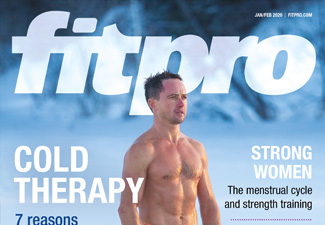Magazine References
Jan – Feb 2020

Pg 08-10
References
- Noakes T (2017), The lore of running, hydration and increasing longevity, Dr Bubbs Performance Podcast, Podcast audio, 22 June.
- https://www.ncbi.nlm.nih.gov/pubmed/22802591.
- British Nutrition Foundation (2018),
- https://www.nutrition.org.uk/nutritionscience/nutrients-food-and-ingredients/protein.html, accessed on 12 November 2019.
- Paruthi S et al (2016), Consensus Statement of the American Academy of Sleep Medicine
- Simpson NS et al (2016), Optimising sleep to maximise performance: implications and recommendations for elite athletes, Scandinavian Journal of Sports Medicine and Science Reports, 27(3).
- Simpson NS, Gibbs EL, Matheson GO (2017), ‘Optimising sleep’ in Watson AM, Sleep and athletic performance, Current Sports Medicine Reports, 16(6).
Pg 14-17
References
- alzheimers.org.uk/about-us/news-and-media/facts-media, accessed on 10 December 2019.
- Dementia and Physical Activity Trial by The BMJ
22-23
References
- https://pdfs.semanticscholar.org/6523/16df7bc920a6bf47c7834f7a1beb50dd7185.pdf, accessed on 5 November 2019.
- https://www.ncbi.nlm.nih.gov/pubmed/25561577, accessed on 5 November 2019.
- https://www.medicalnewstoday.com/articles/322060.php, accessed on 5 November 2019.
- https://casereports.bmj.com/content/2018/bcr-2018-225007.abstract\, accessed on 5 November 2019.
- https://journals.plos.org/plosone/article?id=10.1371/journal.pone.0161749, accessed on 5 November 2019.
Pg 24-25
References
- Patterson RE et al (2017), Metabolic effects of intermittent fasting, Annu Rev Nutr., 21(37): 371-379.
- Mattson M et al (2017), Impact of intermittent fasting on health and disease processes, Ageing Res Rev., 39: 46-58.
- Horne BD et al (2015), Health effects of intermittent fasting: hormesis or harm? A systematic review, Am J Clin Nutr., 102(2): 464-70.
- Tinsley GM et al (2015), Effects of intermittent fasting on body composition and clinical health markers in humans, Nutr Rev, 73(10): 661-74.
- Ganesan K et al (2018) Intermittent fasting: the choice for a healthier lifestyle, Cureus., 10(7): e2,947.
Pg 26-27
References
- https://www.rte.ie/brainstorm/2017/1024/914860-what-happens-to-your-body-when-you-run-a-marathon/, accessed on 7 November 2019.
- https://www.who.int/medicines/access/controlled-substances/5.2_CBD.pdf, accessed on 2 December 2019.
- https://www.health.harvard.edu/blog/cannabidiol-cbd-what-we-know-and-what-we-dont-2018082414476, accessed on 2 December 2019.
- https://naturalwellnesscbdoil.com/blog/cbd-oil-uk-law/ and https://www.britishcbdoils.co.uk/british-cbd-laws/, accessed on 7 November 2019.
- https://www.usada.org/spirit-of-sport/education/2018-prohibited-list-summary-of-major-changes/, accessed on 7 November 2019.
- https://irp-cdn.multiscreensite.com/51b75a3b/files/uploaded/Report%20%7C%20CBD%20in%20the%20UK%20-%20Exec%20Summary.pdf, accessed on 2 December.
- https://satipharm.com/, accessed on 7 November 2019.er 2020.
Pg 28-31
References
- Appleton SM (2018), Premenstrual syndrome: evidence-based evaluation and treatment, Clinical obstetrics and gynecology, 1:61(1):52-61.
- Yonkers KA, Simoni MK (2018), Premenstrual disorders, American journal of obstetrics and gynecology, 1:218(1):68-74.
- Sammon CJ, Nazareth I, Petersen I (2016), Recording and treatment of premenstrual syndrome in UK general practice: a retrospective cohort study, BMJ open, 1:6(3):e010244.
- Ryu A, Kim TH (2015), Premenstrual syndrome: A mini review, Maturitas, 1:82(4):436-40.
- Biggs WS, Demuth RH (2011), Premenstrual syndrome and premenstrual dysphoric disorder, American family physician, 15:84(8):918.
- Meyer JD, Koltyn KF, Stegner AJ, Kim JS, Cook DB (2016), Influence of exercise intensity for improving depressed mood in depression: a dose-response study, Behavior therapy, 1:47(4):527-37.
- Daley AJ (2008), Exercise and primary dysmenorrhoea, Sports Medicine, 1:38(8):659-70.
- Goldfarb AH (2013), Exercise and endogenous opiates, Endocrinology of Physical Activity and Sport, Humana Press, Totowa, NJ, pp21-36.
- Takeda T, Imoto Y, Nagasawa H, Muroya M, Shiina M (2015), Premenstrual syndrome and premenstrual dysphoric disorder in Japanese collegiate athletes, Journal of pediatric and adolescent gynecology, 1:28(4):215-8.
- Potter J, Bouyer J, Trussell J, Moreau C (2009), Premenstrual syndrome prevalence and fluctuation over time: results from a French population-based survey, Journal of Women’s Health, 18(1): 31-39.
- Sadler C, Smith H, Hammond J, Bayly R, Borland S, Panay N, Crook D, Inskip H (2010), Lifestyle factors, hormonal contraception, and premenstrual symptoms: the United Kingdom Southampton Women’s Survey, Journal of Women’s Health, 1:19(3):391-6.
- Karacan S, Çolakoğlu FF, Ersöz G. Menstrual status differences of elite Turkish female athletes from various team sports.
- O’Donnell S, Bird S, Jacobson G, Driller M (2018), Sleep and stress hormone responses to training and competition in elite female athletes, European Journal of Sport Science, 28:18(5):611-8.
- Crewther BT, Hamilton D, Casto K, Kilduff LP, Cook CJ (2015), Effects of oral contraceptive use on the salivary testosterone and cortisol responses to training sessions and competitions in elite women athletes, Physiology & Behavior, 1:147:84-90.
- Bourdon PC, Cardinale M, Murray A, Gastin P, Kellmann M, Varley MC, Gabbett TJ, Coutts AJ, Burgess DJ, Gregson W, Cable NT (2017), Monitoring athlete training loads: consensus statement, International Journal of Sports Physiology and Performance, 1:12(s2):S2-161.
- Gabbett TJ, Nassis GP, Oetter E, Pretorius J, Johnston N, Medina D, Ryan A (2017), The Athlete Monitoring Cycle: A Practical Guide to Interpreting and Applying Training Monitoring Data.
- Coyne JO, Haff GG, Coutts AJ, Newton RU, Nimphius S (2018), The current state of subjective training load monitoring—A practical perspective and call to action, Sports Medicine open, 4(1): 58.
- Wilkes D, Monitoring stress and wellness in elite athletes undertaking tertiary study (Doctoral dissertation, Lincoln University).
- McGuinness A, McMahon G, Malone S, Kenna D, Passmore D, Collins K (2018), Monitoring wellness, training load, and running performance during a major international female field hockey tournament, J. Strength Cond. Res, 12:12.
- Vescovi JD (2011), The menstrual cycle and anterior cruciate ligament injury risk. Sports 1. Explain the functions of assessment in learning and development, Medicine, 1:41(2):91-101.


